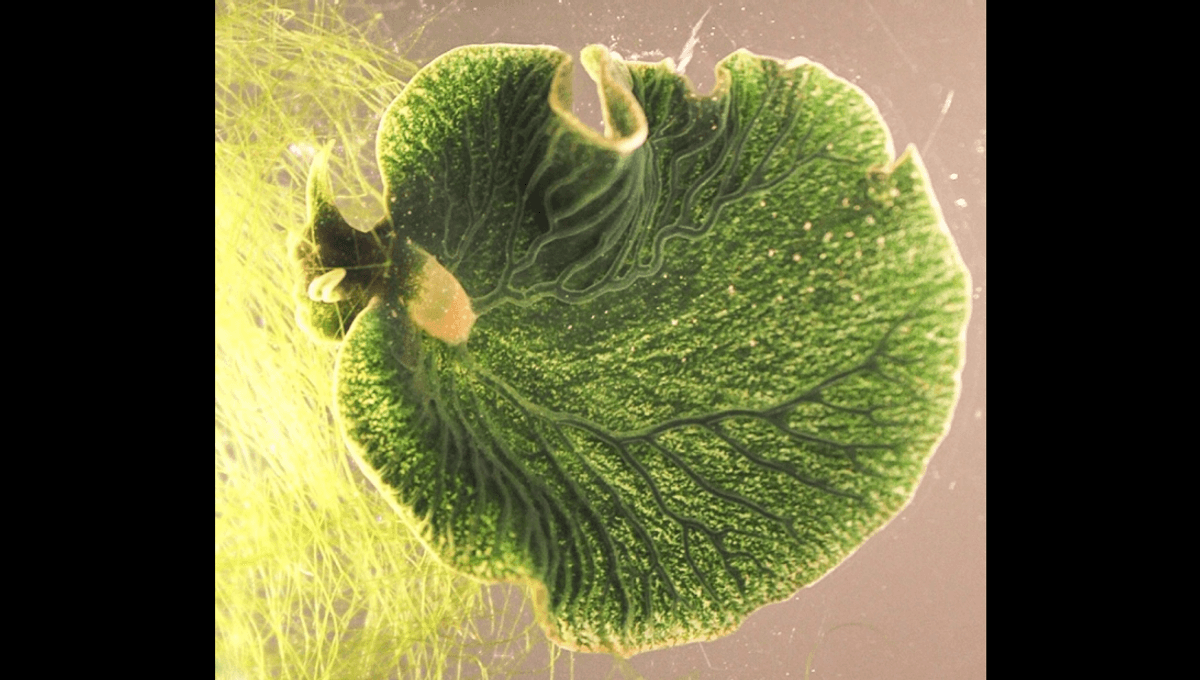
A scientist in Japan made a chance and shocking discovery when they saw that a sea slug in their lab had lost its head. Expected to wither away without its vital organs, the head surprised everyone by surviving long enough to grow a whole new body. How? Well, it seemed they’d gone solar-powered.
ADVERTISEMENT GO AD FREE
Among the Sacoglossan sea slugs, we see a phenomenon known as kleptoplasty in which some species are able to incorporate the photosynthetic superpowers of plants by eating algae and incorporating its cells into their own tissues. Yes, it seems the sacoglossans throw up something of an anomaly when it comes to that old game “animal, vegetable, mineral,” being an animal that boasts one of the trademarks of leafy green plants.
One of the most remarkable examples of this is the sea slug Elysia chlorotica, which has the nickname “a leaf that crawls”, and it’s easy to see why. Confirmed kleptoplasts, they have specialized mouthparts that enable them to suck the chloroplasts out of algae and store them in their own digestive cells for months, putting them to work for longer than even the algae would have. Stealing the photosynthetic cells from their food not only enables these slugs to become solar-powered, but it can also double up as camouflage.
It all sounds very impressive, but isn’t it a bit too simple? How can it be that the cells from one organism can just suddenly be put to work in something entirely different? It’s a good question, and one raised by scientists studying Elysia in a 2014 study.
“There is no way on earth that genes from an alga should work inside an animal cell,” said Sidney Pierce from the University of South Florida. “And yet here, they do. They allow the animal to rely on sunshine for its nutrition. So if something happens to their food source, they have a way of not starving to death until they find more algae to eat.”
Prior to Pierce and colleagues’ research, we didn’t know how the sea slugs were able to store and make use of the stolen chloroplasts, but DNA amplification, sequencing, and advanced imaging techniques revealed a genetic mechanism that could explain it. They discovered that one of several algal genes needed to repair damage to chloroplasts and keep them functioning is present on the slug’s chromosome. It marked one of the first times this kind of functional gene transfer from one multicellular species to another had been identified, bringing with it a new appreciation of what it takes for a slug to become a leaf.
ADVERTISEMENT GO AD FREE
Now if only I could harness the long life of Twinkies.
Source Link: These “Solar-Powered Sea Slugs” Steal Plants’ Superpowers To Feed On Sunlight